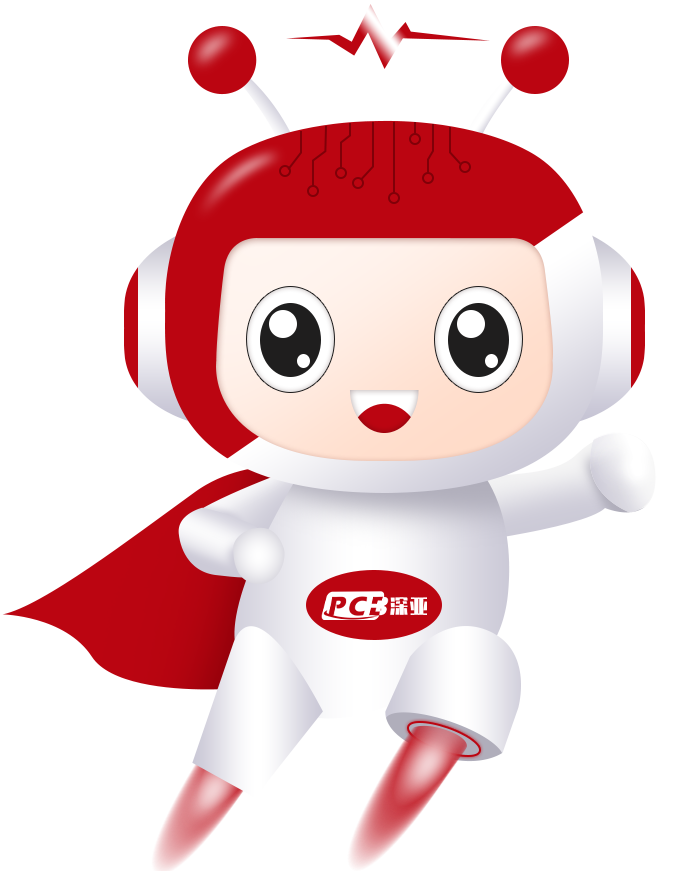PCB特殊工艺分享
- 发布时间:2024-09-19 17:21:32
- 浏览量:1063
1、金手指Tie bar less工艺(Removal Of Gold Finger Plating Tie Bar)
随着PCIe Gen5接口的出现,各种PCB工艺也需要同步以满足PCIe Gen5的工艺要求。因此,Tie bar less工艺就成为PCB厂家必修的工艺之一。下图显示了英特尔最新的PCIe Gen5布局指南;
金手指通过镀金线电镀硬金,再通过PCB工艺蚀刻掉镀金线(保留部分覆上干膜),减少高速信号的信号损耗从而实现更好的信号传输:
蚀刻镀金线时一般有两种Tie bar less工艺,用于减少Tie bar的产生:
从可靠性的角度来看,一般选择无undercut设计会更好,以避免插拔后金面undercut处翘起或塌陷
2、 板边电镀(Edge Plating)
PCB的镀边是指从电路板TOP延伸到BOT并沿电路板一侧边缘的镀层。在制造过程中,需要金属化的边缘在镀铜/金前进行数控铣削,镀铜/金后对PCB的边缘进行适当的表面处理:
镀边在PCB上的设计应用:
1)增强电流传导
2)信号的完整性
镀边通过防止干扰进入信号内部传输,提高了PCB的信号完整性
3)热分布
由于边缘镀层的金属性质,其提供了额外的冷却表面积以将热量散发到周围的空气中,并提高了PCB的可靠性(特别是对于热敏性的元件)
4)提高EMC/EMI性能
边缘镀层允许杂散电流的逃逸,防止产生零星的电场和磁场,这有助于保持更好的EMC/EMI性能
5)防止静电损坏
在处理PCB时,静电可能会放电到敏感元件上。金属表面有助于吸收静电,防止静电损坏。
3、特殊工艺专用名词统计
POFV (plate over filled via) 盘中孔
PIP(Pin in Paste)回流焊工艺焊接通孔元器件==PIH (Paste-In-Hole) 通孔印锡膏
Press Fit 无焊锡组装工艺:压接
PTH(Plated Through Hole)镀通孔
HASL(Hot Air Solder Leveling)热风焊锡整平
OSP(Organic Solderability Preservative)有机可焊性保护层
ENIG(Electroless nickel immersion gold)沉镍金
ImSn(immersion Stannum)沉锡
ImAg(immersion Argentum)沉银
ENEPIG(Electroless Nickel Electroless Palladium Immersion Gold)沉镍钯金
Gold Plating 电金,镀金
AOI (Automatic Optical Inspection) 自动光学检测
ICT(In-Circuit-Test)在线测试
PP(Panel Plating) 板电
Deburring 去毛刺(沉铜前磨板
backdrill 背钻
Bare Copper 裸铜
BVH(Blind Via Hole)盲孔
4、工艺流程专业名词
•Sheets Cutting
Cut the substrate to the working panel according to the material dimension on the work order.
•Scrub
Before lamination, the copper foil on the board should be roughened by brushing, micro-etching, etc., and then the dry film photoresist should be tightly attached to it with appropriate temperature and pressure.
•Dry Film Lamination
The board is proceed with pre-treatment to clean and micro-etch , the surface of the board is cleaned and micro-etched, and then sent to the lamination machine for lamination, and a photosensitive organic film is covered on the surface of the board. After exposure, the circuit pattern of the negative film is transferred to the board.
•Exposure
The board with the dry film is sent to the exposure machine for exposure. The dry film will be photosensitive after being irradiated by UV light in the light-transmitting area of the negative film, and the circuit image on the negative film will be transferred to the board surface.
•Inner Developing
During the development phase in PCB flow, the alkaline solution is used to wash out left unhardened photoresists. After that, the inner layer image is printed by blue resist, which will resist the chemical solution at the etching stage.
•Inner Etching
The etching is a key stage of layer imaging, using an acid solution to remove unwanted copper and outline the pattern. After etching, the board is cleaned to wash out the excess chemical solution.
•Inner Stripping
Stripping is to completely peel off the exposed dry photoresist film that protects the copper surface with sodium hydroxide solution to expose the circuit pattern.
•Black Oxide Treatment
The purpose of the brown oxide treatment is to form a microscopic roughness and organic metal layer on the inner layer surface through a chemical treatment to enhance the adhesion between the layers and avoid such problems as delamination.
•Lamination
In actual operation, the discrete multi-layer board and prepreg are pressed together to form a multi-layer board with the required number of layers and thickness. Finally, the copper foil completes the stack-up in pcb process flow The combinations of a copper foil and a prepreg are located on the top and bottom respectively, sandwiching the inner layer to form the stack-up.
The stack-up is processed in the lamination machine, which takes up to 2 hours. After processing under high pressure and temperature, a single laminated board is formed and then moved to the cold press. In this stage, various factors such as the uniformity of copper distribution, the symmetry of the stack, the design and layout of the blind and buried holes must be considered in detail during the design.
•Drilling
Drilling has 2 main purposes, one is to connect load components, another is to link the copper layers. In this stage, there is no copper in the holes, therefore the current cannot flow through the board.
•Desmear
In desmear process friction-melted resin and drilling debris are removed from drill holes. This is achieved by permanganate or plasma treatment. Certain processes can also improve coating adhesion of the resin by micro roughening.
•Copper Plating
The drilled PCB board undergoes an oxidation-reduction reaction in the sinking copper cylinder to form a copper layer to metalize the holes. The copper is deposited on the surface of the originally insulated substrate to obtain conductive holes, thereby achieving electrical communication between the inner layer and outer layer. The stage of printed circuit board production process takes place in a series of chemical and rinsing baths.
•Outer Layer Etching
There are three main steps in PCB flow. Firstly, all residues and the dry film are removed, but the unwanted copper remains. Next, the board passes through the chemical solution to etch away the unwanted copper and tin. Finally, the circuit areas and connections are properly defined.
•Solder Mask
Solder mask is one of the most critical stages in the production of printed circuit boards, mainly by screen printing or coating solder mask ink to coat a layer of solder mask on the surface of the board. Through exposure and development, the pads and holes are exposed, and the solder mask is hardened. Finally, the unprotected and unhardened portions by insolation will be washed out.
•Surface Finish
The solderability of bare copper itself is pretty good, but long-term exposure to the air is easy to be damp and oxidized. The bare copper tends to exist in the form of oxide, which is unlikely to remain in its original state for a long time. Therefore, surface treatment of the copper surface is required to ensure good solderability and electrical properties. The most common surface treatments are immersion tin, electroless nickel immersion gold (ENIG), immersion silver, gold plating, etc.
•Silkscreen
This stage prints the required characters or part symbols on the board surface by screen printing, and then exposes it under the UV light.
•CNC-Routing
Cut the PCB to the required shape and dimensions.
•Electrical Test
Simulate the state of the PCB board and check the electrical performance to see if there is an open or short circuit.
•O.Q.C.
Check the appearance, size, hole diameter, thickness, marking, etc. of the board to meet customer requirements. The qualified products are packed into bundles, which are easy to store and transport.
————————————————
版权声明:本文为博主原创文章,遵循 CC 4.0 BY-SA 版权协议,转载请附上原文出处链接和本声明。
blog.csdn.net/qq_41904778/article/details/135126376
免责声明:部分文章信息来源于网络以及网友投稿,本网站只负责对文章进行整理、排版、编辑,意为分享交流传递信息,并不意味着赞同其观点或证实其内容的真实性,如本站文章和转稿涉及版权等问题,请作者在及时联系本站,我们会尽快和您对接处理。




